For gear heads like me the ultimate destination has to be a golf club factory.
Most of the industry production of steel heads is now done in the Far East where they have a long history of forging and of course, cheaper labour costs.
However the final product you have in your hands can often be assembled locally and one of the brands doing this in the UK is Mizuno in their factory at Cumbernauld in Central Scotland.
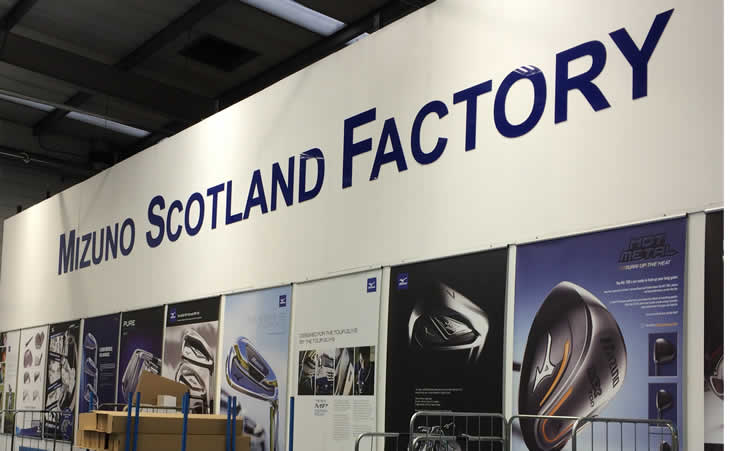
It opened in 1991 doing standard assembly of Mizuno heads that are forged in Japan. By 1993 it was doing custom club assembly for orders from professional fitters before offering it direct from 1997.
Back in the 1990s I remember going along to Cumbernauld to get fitted on their indoor simulator for my T-Zoid Pro irons and then the customised set arriving a few days later. The fitting facility at the factory has come and gone a few times, but when I returned there in 2015, I was pleased to see it being reinstated in the same room I used all those years ago.
Custom assembly now accounts for 50% of the 275,000 clubs that go out the door from Cumbernauld each year, so I went down on to the factory floor for a personal tour to see how it was done.
As a former student of business, I had heard of the Kaizen practice of continuous improvement used by all staff from the bottom to the top. Based on principles devised at Toyota in Japan, all the processes in the factory are continually refined using ideas from the people who are actually doing the work, rather than imposed on them from above or outside.
The layout of the factory and the machines they use, and in many cases invented themselves, were all part of a master plan to get clubs assembled and out the door in the shortest possible time without compromising on quality.
Having experienced the Mizuno Swing DNA custom fitting process I was here to see how this translated into the clubs being created first hand.
The process was started by the picker checking the order and placing the relevant shafts, grips and heads in a box to pass on to the next stage.
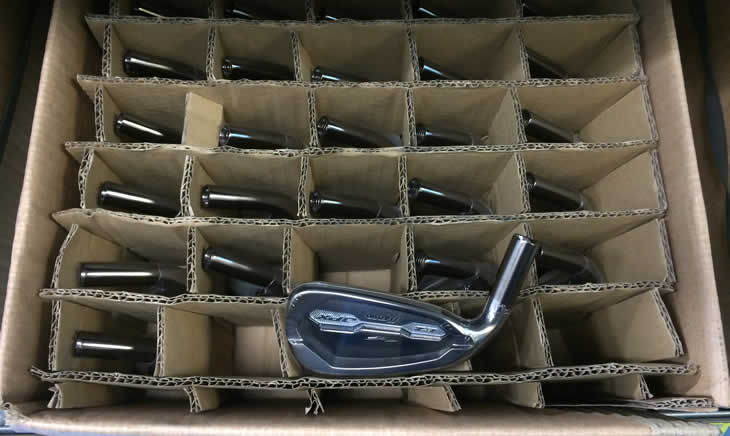
The heads were then adjusted for loft and lie and the serial numbers etched on to the hosel so they can be tracked for warranty purposes.
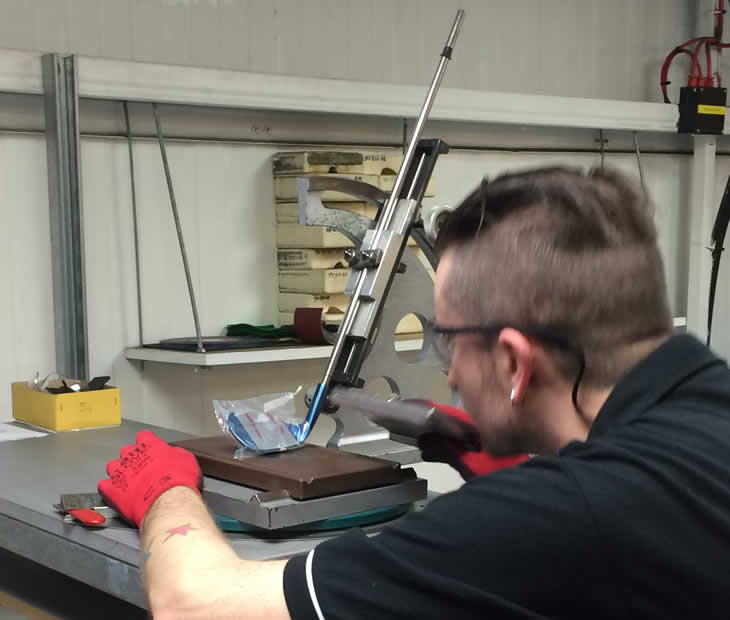
The shafts are then cut to the correct length as requested by the fitter. In my Swing DNA session it had recommended that the shafts were Hard Stepped. This involves taking a 6-iron shaft and cutting it longer before putting it into the 5-iron to increase the flex to make it slightly stiffer. It is almost like creating a half flex when someone is between a regular and a stiff shaft.
Adjusting the shafts was very slick with the tip and the butt cut very quickly and then a sanding belt at each side of the cutter allows for smoothing with just a quick movement of the shaft left and right.
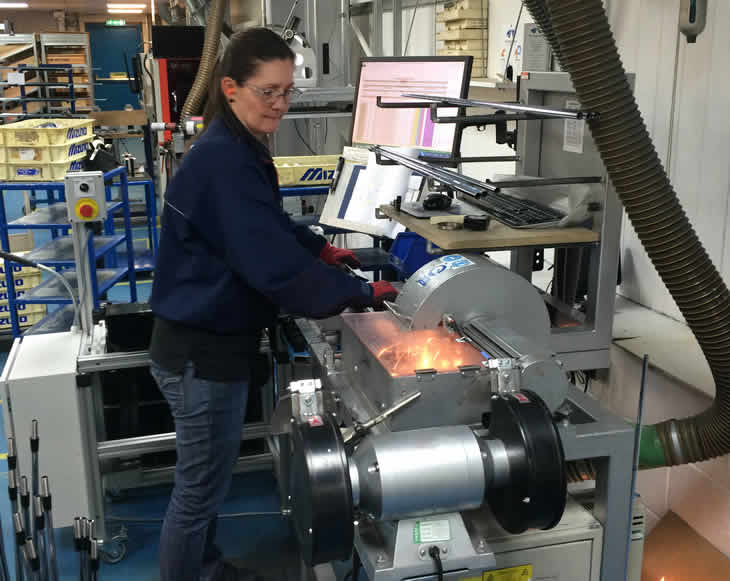
It was a clear example of Kaizen in practice as this had been designed by the workers themselves to combine what was previously three processes and three different machines into a few movements at a single station.
The tape was then applied to the shafts using a guide to show exactly where it should be placed for each type of grip so that it does not protrude beyond the bottom when the grip is on.

The grips are then slid on and aligned using a red laser in a matter of minutes for a set. If you have ever tried to fit grips yourself then you will know how impressive this is.
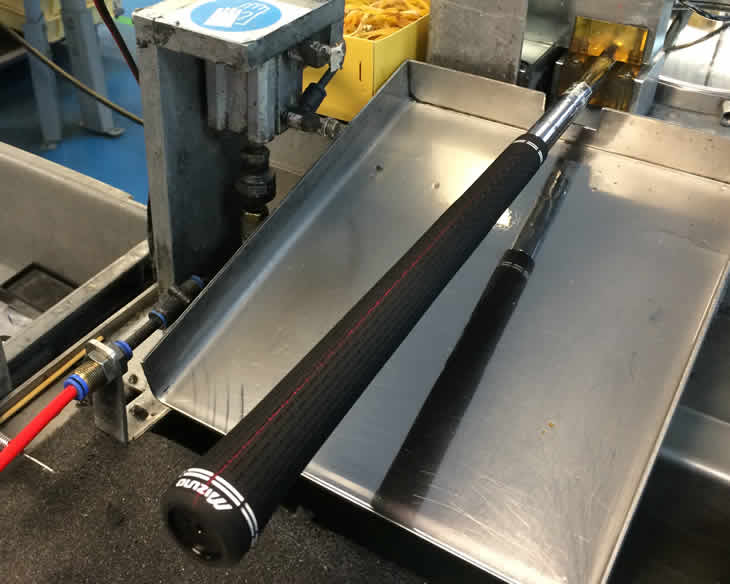
The assembled shafts are checked once again for length and any swing weights are added before they are glued to the heads.
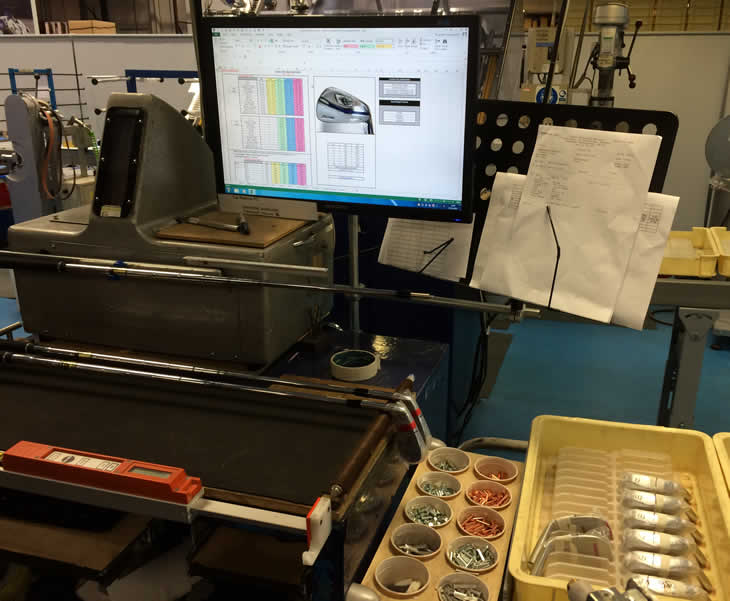
There is a seriously detailed spreadsheet for each model of iron detailing every shaft type, length, head weight and grip so that the correct swing weight can be calculated for each number of iron and also made consistent throughout the set.
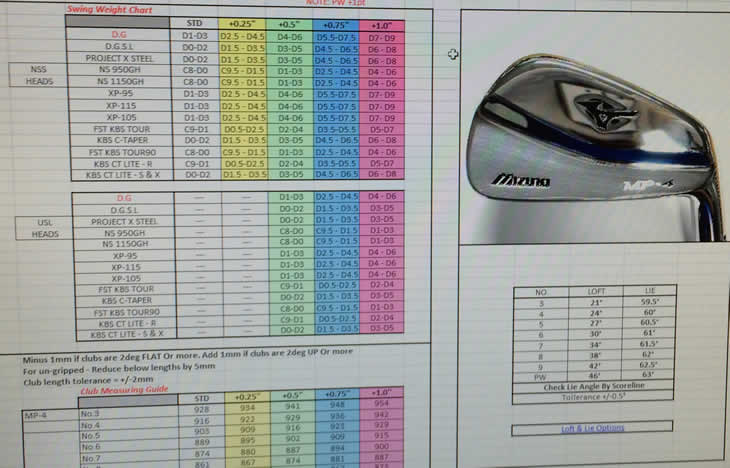
The last part of the assembly is the only bit I cannot show you as Mizuno has developed their own gluing compound and process that we were not allowed to photograph.
What I can tell you is that it uses a rotating rack that heats the glue to 60°C and takes just 20 minutes to set hard enough that you could take it off the rack and go and hit it.
From there the irons go through a cleaning process and quality control check before being put into a classy custom order box ready for dispatching to the lucky golfer.
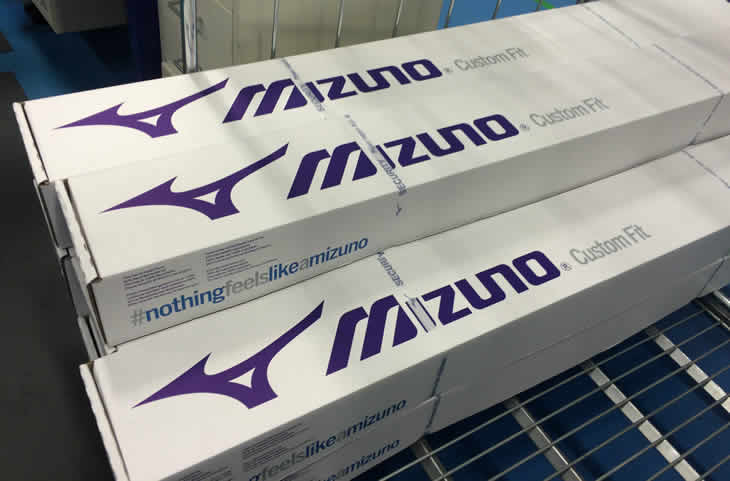
Viewing the whole process was very impressive and to a degree quite humbling. The attention to detail and the obvious pride in their work that the Mizuno staff had was very impressive.
Each person is rotated around each of the processes every 2 hours to break up the day and therefore has to be an expert at every task, which is very impressive and is shown by the 0.003% return rate. This is a result of the Japanese working culture combined with a bit of Scottish nouse and hard work to create a factory that leads the way in quality control results amongst Mizuno's global plants.
From receiving your order at the factory to having a customised set ready to be sent out usually takes 1-2 days depending on the time of day the order is received and then you need to allow an extra day or so for delivery. The plan in the future is for a same day service to be offered on a fee basis, so you can get fitted in the morning and pick up your customised clubs that afternoon.
Either way, having seen the sharp end of club assembly, whenever your clubs arrive you will know that every care has been taken to build them to your specifications.
What happens on the course thereafter is solely up to you.
More from Mizuno